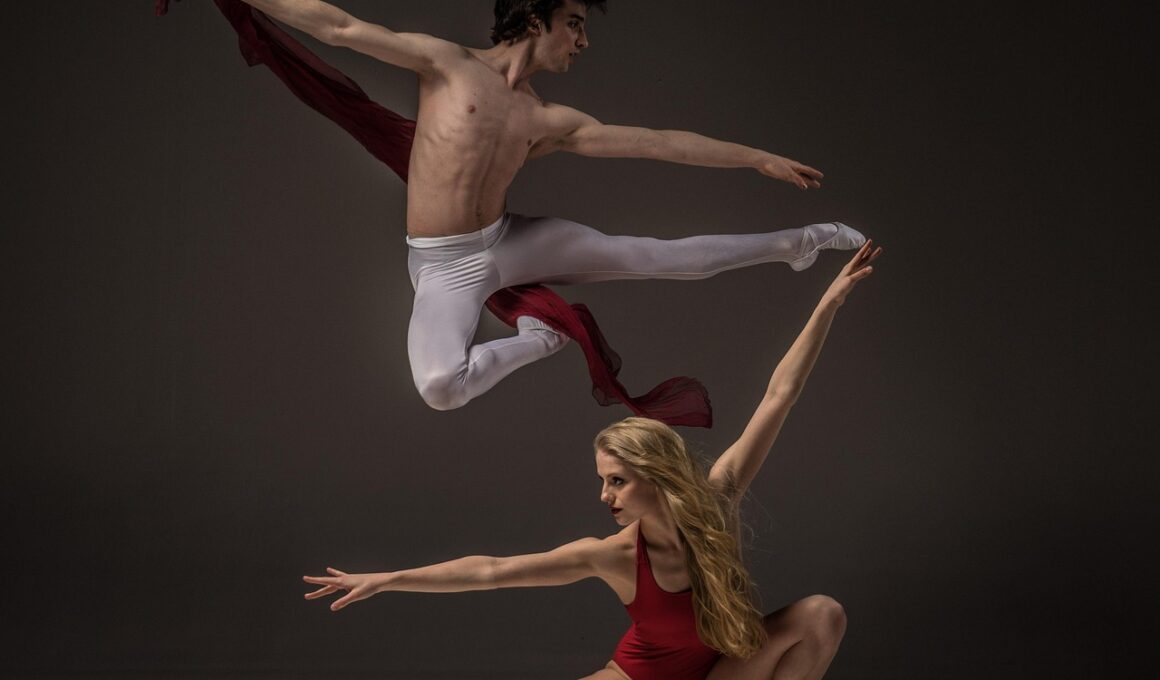How Dance Classes Help Improve Balance and Coordination in Kids
Dance is not merely an art form; it’s a comprehensive activity that significantly enhances balance and coordination in children. By participating in dance classes, kids engage in a series of movements that require careful control and handling of their bodies. This practice emphasizes rhythm, which plays a vital role in how they align themselves and move with precision. The beauty of dance lies in its structured sequences, requiring each participant to remember and execute steps accurately. Additionally, these classes often involve activities that challenge their physical abilities, pushing them beyond their comfort zones. Through various dance styles, from ballet to hip-hop, children learn to use their body parts harmoniously, thereby improving their overall posture and stability. Dance classes also incorporate playful elements, keeping young learners engaged and excited about their development. The energetic music and social interactions foster a supportive environment where they feel encouraged to explore their physical limits freely. As they become more adept at controlling their movements, children discover newfound confidence in their balance and coordination capabilities. This foundation is invaluable, creating a solid base for their participation in different sports and physical activities later on.
Aside from physical skills, dance classes significantly contribute to cognitive and social development. As children learn choreographed sequences, they must remember each step while also staying in sync with others. This multitasking enhances brain function, improving their memory and concentration. Group dance activities encourage teamwork and cooperation, as children work together to create harmonious movements. This collaborative spirit fosters friendships, contributing to their social skills. Furthermore, when kids recognize improvements in their dance abilities, their self-esteem receives a boost. This confidence transcends the dance floor and positively impacts other areas, including academic performance. Moreover, dance provides an avenue for self-expression, allowing kids to explore their emotions creatively. With each class, they learn to interpret music in unique ways, promoting emotional intelligence. Additionally, learning various dance styles broadens their cultural awareness as they explore different traditions and expressions. This exposure helps cultivate respect for diversity, nurturing their understanding of differences among people. Ultimately, kids who participate in dance classes reap far-reaching benefits that extend beyond physical improvement, creating well-rounded individuals capable of thriving in a variety of life’s arenas.
Balance and coordination exercises are pivotal for developing fine motor skills. Dance offers a variety of movements that enhance these abilities in a fun and engaging manner. For instance, ballet emphasizes balance, teaching children how to control their center of gravity while executing intricate moves. Similarly, hip-hop encourages quick shifts and dynamic motions that improve their overall agility. These transferable skills are beneficial not only in dance but in other activities, including sports and daily tasks. As they engage in dance, kids also learn the importance of body awareness, which is crucial for preventing injuries. They discover how to adapt their movements based on spatial surroundings, which enhances their spatial awareness. Dance classes often incorporate improvisational elements, allowing children to explore their bodies creatively. This exploration reinforces their adaptability and encourages innovative thinking. Teachers frequently design exercises that challenge students to balance on one foot or perform intricate turns without losing their footing. These challenges instill a sense of achievement when successfully completed. Furthermore, the routine practice develops muscle memory, allowing children to execute movements with increased efficiency over time, fostering lifelong skills they can use in various physical activities in the future.
The Role of Consistency in Progress
Regular attendance in dance classes fosters a strong foundation for developing balance and coordination. Repetition is integral when mastering any skill, and dance is no exception. As children practice regularly, they reinforce muscle memory, making movements flow more naturally over time. Consistent participation helps identify patterns that are essential for advancing their technique. The progression within various dance forms reveals how committed practice contributes to improvement. Kids constantly build on what they learn, often moving from beginner to advanced steps that require increased coordination. This graduated approach keeps their motivation high while offering continual challenges. Dance also offers structured feedback from teachers, allowing children to better understand their strengths and areas needing improvement. Positive reinforcement further encourages them to keep trying while developing resilience. Additionally, forming a routine with weekly classes builds discipline, essential for success in all aspects of life. Kids learn to manage their time wisely, balancing schoolwork and dance commitments. As they navigate these routines, they develop skills that are vital in adulthood, going beyond simple coordination and instilling treasures of life skills that are often overlooked in traditional educational settings.
Furthermore, dance classes significantly enhance physical fitness, which is intrinsically linked to balance and coordination. The diverse range of movements in dance increases core strength, flexibility, and endurance within participants. Strong muscles in the core region are crucial for maintaining stability during various physical activities. When children dance, they engage multiple muscle groups, thereby enhancing overall coordination. Better coordination means they can execute movements with more precision, which is particularly beneficial in sports. Sometimes, dance routines will involve quick shifts in direction, requiring agility and balance. As they encounter these challenges, they learn how to respond appropriately to prevent falls or injuries. Dance also often incorporates elements of improvisation, which encourages effective decision-making and promotes an understanding of their body’s limits. Through creative expression, children become more confident in their physical abilities, which increases their willingness to participate in other fitness activities. By engaging in heightened physical fitness through dance, kids develop healthier habits that last a lifetime. Regular movement and exercise through fun activities like dance foster a lifelong appreciation for physical fitness and the joy that movement brings to their life.
Emotional and Mental Benefits of Dancing
Dance serves as an excellent outlet for children to express themselves, allowing them to explore and channel emotions productively. As kids engage with dance, they confront various feelings, including joy, sadness, and anxiety. Learning how to express emotions through movement translates into better emotional regulation and understanding. Additionally, practicing dance often includes listening to diverse styles of music, exposing them to different cultures and interpretations. This exposure can foster empathy and emotional intelligence about different backgrounds and experiences. Dance provides a sense of community and belonging as children work together to create and perform. This connects them with others who share similar interests, allowing them to form friendships based on mutual enjoyment. The collective experience found in dance classes encourages positive interactions, providing a supportive environment for expression. Moreover, many children find performing in front of audiences to build confidence, teaching them to manage stage fright and anxiety. As they prepare for performances, kids learn about responsibility and hard work, leading to satisfying outcomes. The combination of these factors in a dance setting encapsulates not just the physical but also the emotional and mental growth that is imperative for holistic development.
Ultimately, enrolling in dance classes should be viewed as an investment in a child’s physical, emotional, and social growth. Parents seeking to enhance their child’s overall abilities need to consider the multifaceted benefits of dance as a powerful approach to fitness. Dance encourages teamwork, discipline, and dedication, attributes that are essential for success in life. By facilitating the development of coordination and balance, kids not only improve their dance skills but also acquire valuable life lessons, learning to face challenges head-on and pursuing their passions. Then, through dance, they undergo a transformative journey, redefining their self-image and fostering resilience that translates across all areas of life. The skills acquired in dance will stay with them throughout their lives, enabling them to navigate diverse situations both physically and socially. To maximize these benefits, parents should seek programs that align with their children’s interests, promoting longevity in participation. Impressively, the world of dance offers a welcoming space where kids thrive, regardless of their starting point. Ultimately, encouraging a lifelong commitment to physical activity unlocks a wealth of opportunities both in sports and personal relationships, igniting a passion for movement that lasts well into adulthood.


